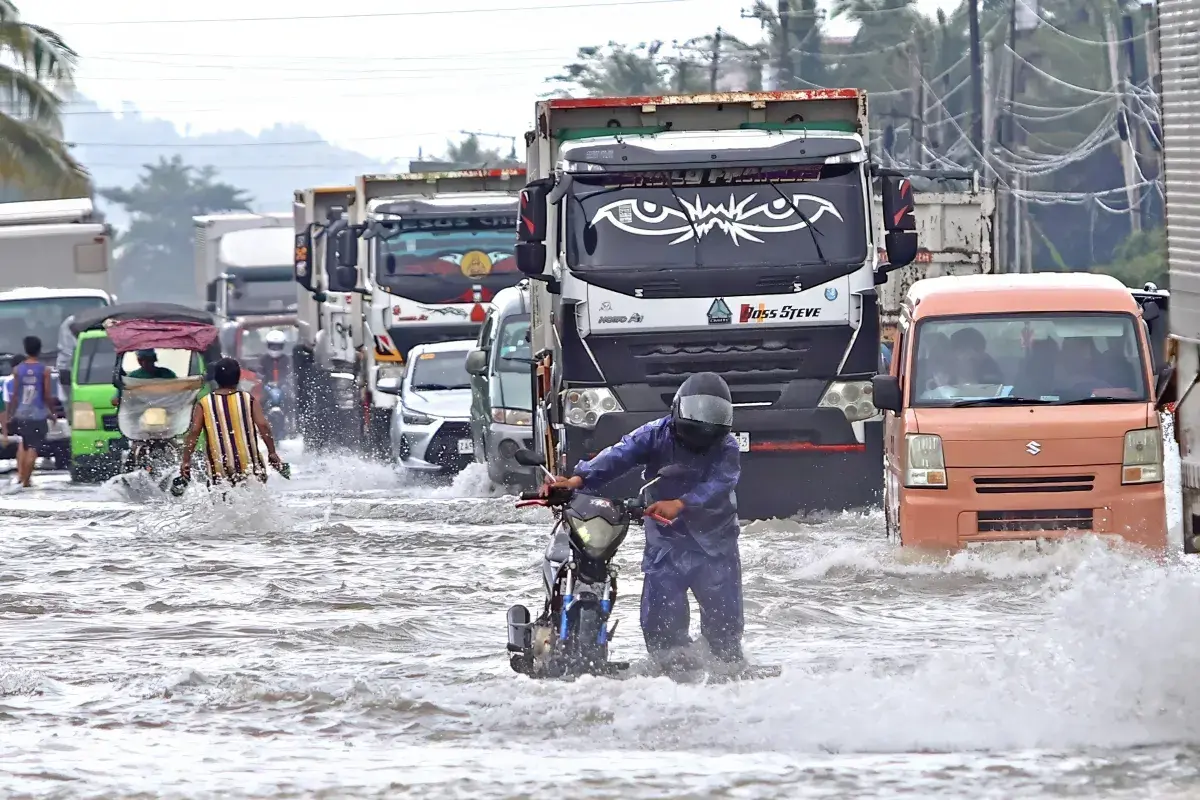
Super Typhoon Fung-wong made landfall in northeastern Aurora province in the Philippines on Sunday night with sustained winds of up to 185 kph (115 mph) and gusts of up to 230 kph (143 mph), forcing more than 1.4 million people to evacuate and claiming at least two lives, according to the Associated Press.
The Context
The storm, covering approximately 1,800 kilometers (1,118 miles) with its rain and wind band, hit the Philippines while the country was still recovering from Typhoon Kalmaegi, which killed at least 224 people earlier this week before moving to Vietnam, where five more died.
Philippine President Ferdinand Marcos Jr. declared a state of emergency on Thursday as the capital Manila contended with the damage from Typhoon Kalmaegi and braced for the arrival of Fung-wong, referred to locally as Uwan.
What To Know
One person drowned in flash floods in the eastern province of Catanduanes, while a 64-year-old woman died in Catbalogan city in eastern Samar province when she was pinned by debris as she attempted to evacuate. Over 1.4 million people evacuated to emergency shelters or relatives’ homes before the typhoon made landfall, with approximately 318,000 remaining in evacuation centers on Monday.
At least 132 northern villages experienced flooding, with some residents trapped on rooftops as waters rapidly rose. About 1,000 houses were damaged, and roads blocked by landslides await clearing as weather conditions improve. Entire provinces lost power as destructive typhoon-force winds battered northern and central Luzon.
More than 200 millimeters of rainfall struck Luzon, the Philippines’ largest and most populated island, bringing widespread incidents of severe flooding and landslides, according to the Philippine Atmospheric, Geophysical and Astronomical Services Administration. The most severe warnings were in place for Aurora, Nueva Vizcaya, and Camarines Norte.
Over 300 domestic and 61 international flights were canceled over the weekend and into Monday, while approximately 6,600 commuters and cargo workers were stranded across more than 100 ports after the coast guard prohibited ships from venturing into rough seas. Schools and most government offices closed on Monday and Tuesday as authorities continued rescue and relief operations.
The typhoon weakened as it moved through mountainous northern provinces and agricultural plains overnight before blowing away from La Union province into the South China Sea. It is forecast to head northwest toward Taiwan, expected to make landfall over western Taiwan on Thursday before rapidly weakening over the Taiwan landmass and emerging near the Ryukyu Islands as a remnant low or weak tropical depression.
What People Are Saying
Bernardo Rafaelito Alejandro IV, Office of Civil Defense: “While the typhoon has passed, its rains still pose a danger in certain areas in northern Luzon, including in metropolitan Manila. We’ll undertake today rescue, relief and disaster-response operations.”
Philippine Defense Secretary Gilbert Teodoro Jr, said in a public address: “We ask that people preemptively evacuate so that we don’t end up having to conduct rescues at the last minute, which could put the lives of police, soldiers, firefighters and coast guard personnel at risk.”
What Happens Next?
Authorities will continue clearing blocked roads, assessing damage, and conducting rescue operations as weather conditions improve.
Reporting from the Associated Press contributed to this article.
